USAID Grants and the Democracy of Information
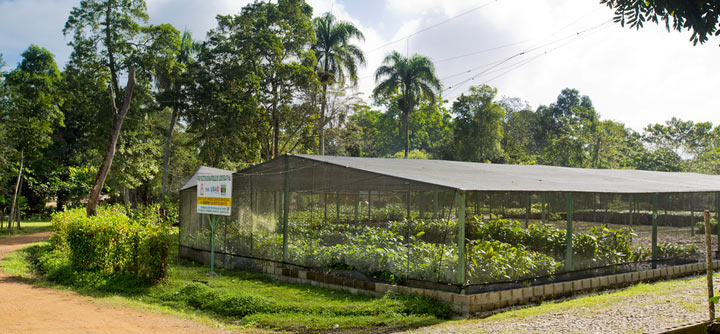
We recently interviewed Cristina Liberati, who administers grants that support farmer cooperatives in Latin America as they improve their quality, productivity, and financial stability. Because of this project, small-scale cacao producers in rural areas can taste samples of the product they grow and assess its quality. This democratization of knowledge makes it possible for farmers to participate fully in a global market! Read the interview below to learn about how Cristina got her start in the chocolate industry, the unexpected spicy perks of international travel, and her hopes for the future of fair trade.
Sharing Knowledge is Good Business
Q: Hello, Cristina! What is your position at Equal Exchange?
A: My position title is the Grant Projects Manager. Grant projects have been a part of Equal Exchange’s past for some time, but starting in around 2010, Equal Exchange partnered with another chocolate company, called TCHO Chocolate, in San Francisco, to apply for a grant from the United States Agency for International Development (USAID), so those are funds from the US government that are used to support projects in developing countries. And this is a multimillion dollar grant and has involved four countries in the last seven years — Peru, the Dominican Republic, Colombia, and Ecuador — and as a result of its scope and size, it’s the largest grant project that Equal Exchange has ever done.
Q: You get paid by Equal Exchange, but your work is in this sort of development realm, non-profit, aid work. Is that correct?
A: It’s a complicated question. I am a worker-owner at Equal Exchange, but for any time I spend on the grant, we actually get reimbursed by USAID.
Q: What value do you think this work has to Equal Exchange’s business?
A: Equal Exchange is a funny company in that we are a for-profit business with a social mission, and there are benefits to doing this kind of work that are not quantifiable — you can’t say “oh, well our sales tripled because we did a project in the Dominican Republic with a cacao cooperative.” But there are specific activities that we’ve done that do contribute to our commercial activities, such as improving the quality of coffee and cacao coming from particular groups, which is a clear connection to our being able to provide higher quality products to our customers. We purchase organic, and it is a major challenge for organic farmers worldwide to produce as much raw product as their neighbors who are producing with conventional methods and chemicals, so part of our project is working with small farmers to improve their productivity. Which helps us! And, finally, we work with the co-ops to improve their financial management practices. It’s always better to have a partner who is financially and managerially stable than one who is not. And unfortunately, that’s more the exception than the norm for agricultural cooperatives.
Q: What was your job before this? Your job description, which lists all your various duties, is really overwhelming! How did you get into this, how did you prepare for it, and what else have you done?
A: Before coming to Equal Exchange, I worked for TCHO Chocolate, who we partner with on the grant. I was hired there as a tour guide of the chocolate factory, and that really helped me to learn the chocolate business from the other perspective — you know, working with consumers and also having to explain production of cacao to people who know very little about it, and learning at the same time, myself. That was a great introduction into the world of chocolate. Prior to moving to San Francisco, I did go to graduate school for International Affairs, and I have lived in Latin America and studied in Latin America for a number of years. Because that’s where we primarily carry out our grant activities, knowing the language very well and knowing the culture to a certain extent helped prepare me for this work.
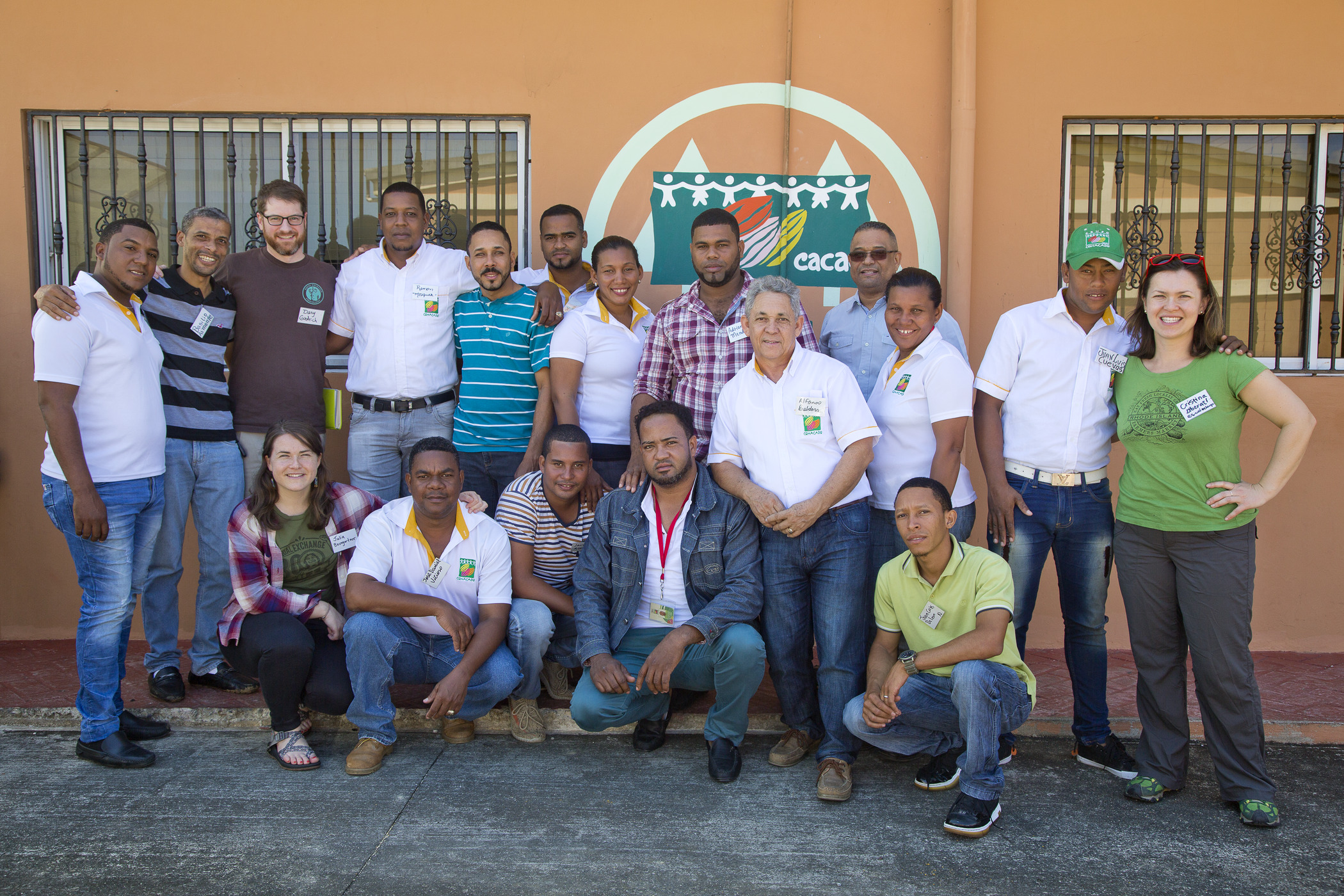
10,000+ Partners
Q: The grants cover both cacao, coffee and banana farmers. All these crops may be grown in the same regions, but they’re totally different businesses. And you’re also working with project coordinators and grant consultants. What are your relationships like with all these different kinds of people? How do you balance that?
A: It’s a fun challenge, for sure. I have regular calls with each group or consultant that we work with, and that really just helps to keep on the same page of how the activities are developing. We also through our grant program helped to organize 15 different cooperative exchanges, where we brought different representatives from the farmer groups in our project together, to share information and learn about the activities they were doing and about those crops. I think my job is unique in that I get to serve as a nexus for all that information, so if I learn about how one group is, say, for example, identifying local trees with great productivity characteristics and cataloguing them, I can share — with their permission — what they’ve learned with another group who’s interested in the same type of activity.
Q: What about your traveling?
A: I travel about 30% of the year, and oftentimes what I’m doing is visiting with the cooperatives that are part of our project to see how the activities are playing out in person. Also, to troubleshoot any issues they might be having, because sometimes it’s hard to get people to talk about challenges and issues over the phone. It’s also great to just meet face-to-face with folks every once in a while. The other primary thing that we’re doing when we’re visiting our partners or these countries is holding workshops or the exchanges that I talked about, amongst different producers.
Q: Do you have trouble keeping people straight, just because there’s so many people?
A: Not really. I’ve been working with the same people now for almost seven years. The cooperative in the Dominican Republic has 10,000 members, so I don’t know everyone. But there are teams of people that I’ve worked with over and over. On farm visits, I try to visit farmers that I have met before and some that I haven’t. I always write a trip report, so I try to go back to my trip reports to refresh my memory of people’s names if I don’t see them or talk to them often.
Q: To what extent are you accountable to USAID? Who do you feel like is your boss and what keeps you accountable to this grant?
A: That answer is pretty simple. It’s the farmers that we’re trying to serve and that are our partners. We’ve been very lucky that USAID has been supportive of the work that we’ve done and of course, like anyone who offers you money, they want you to account for that properly and would like to hear about the outcomes of the use of that money, and I think that that’s fair. I also feel accountable to the worker-owners of EE that this is a good use of our time and resources as a cooperative. But I’ll stick with my first answer as to who I feel MOST answerable to.

Tasting Chocolate — and What That Means for Co-Ops
Q: You do some quality-control work around chocolate. Is that right?
A: Yes. If I had to say I had a specialty, chocolate would be my specialty, because I did work in a chocolate factory before I came here, and it’s the crop that I know the most about, and it has been the largest focus of the grant. I’m on the Quality Control Panel at Equal Exchange, that meets once or twice a week to make sure that our chocolate is both high-quality and food safe for customers. I’m not going to complain about having to eat chocolate for my job!
Q: Equal Exchange has worked in different capacities with producers about analyzing their own products in country so that they can keep on track of whether tweaks need to be made, or how high quality their stuff is. Can you talk about that at all?
A: Sure. Beth Ann Caspersen, who’s the Quality Manager for coffee has been doing this for many years with coffee cooperatives. I do a bit more of it with cocoa cooperatives, but the ideas are the same. The way that chocolate makers analyze a sample of cocoa beans is by making it into chocolate liquor or a solid chocolate sample, and tasting it. For almost the entirety of the history of the chocolate industry, producers have been excluded from conversations about quality analysis that chocolate makers do. Through this grant and through a partnership with TCHO, we installed laboratories that would allow them to make chocolate liquor samples. And we work together with our partners to create a standardized tasting form and tools to train people to be cocoa tasters that were never publicly available before. And what these tools have allowed our partners to do is negotiate the value of their product with their clients, based on its quality. So instead of shipping a bunch of beans to a chocolate maker and then basically receiving a price from that chocolate maker that is determined by them, the producers can say, “We’ve tasted this. We know it’s worth this. And this is the price we’d like to ask you for it.” That has been a really exciting part of what we’ve done.
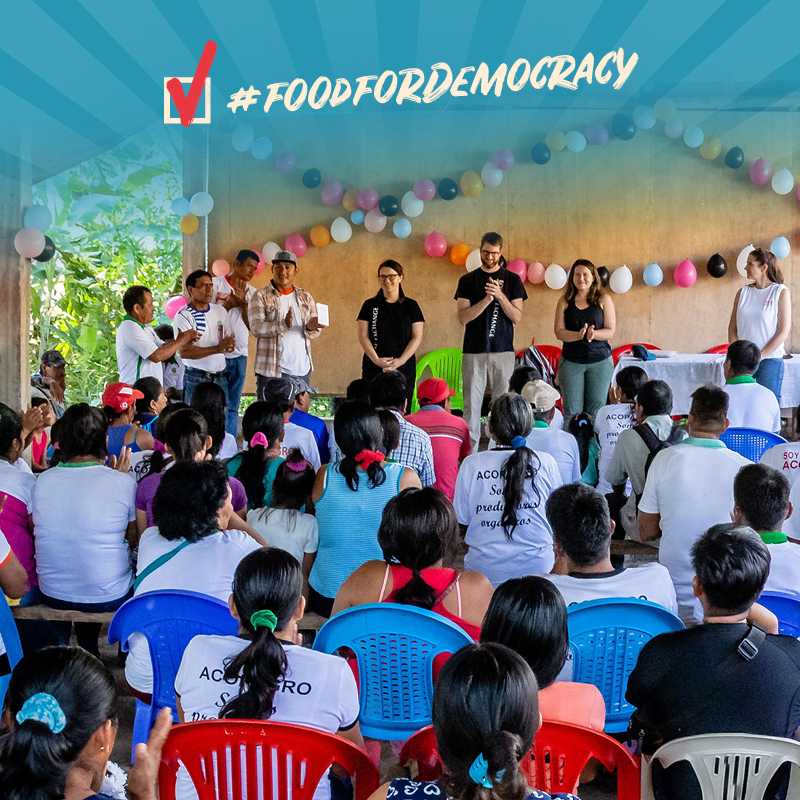
Innovation, Hot Peppers, and the Future of Fair Trade
Q: What cool work stories do you have to share with us?
A: Last year, we decided to create what we call the Innovation Prize Program with our USAID grant and we were offering prizes up to $50,000 to cooperatives for new and novel ideas to tackle problems they had, either in quality, productivity, or what we call capitalization and one of the cooperatives that we work with called ACOPAGRO, based out of Peru, came to us with an idea for an irrigation program. The project manager there said to me, “You know, we’ve actually had this idea for some time, but couldn’t find funding for it, and I told my colleagues: ‘you know who we should ask about this? We should ask Cristina. We should ask Equal Exchange. Because they’ll listen to us and our idea.’” That felt really good.
Q: Did they get the prize?
A: They did get a prize!
Q: Can you tell me another story?
A: I was visiting Peru, a remote community along the riverbank of the Amazon, and the community members just had this incredible energy and were doing some wonderful things. They had formerly been coca producers for cocaine, and wanted to change from illicit crops to licit crops and were supported with growing cacao by a previous project. We went and we helped with some improvements to their fermentation area and drying area. But somehow, they found out on my first visit that I really like hot peppers. And when I came back for my second visit, they offered me a whole plate of hot peppers that they had grow specially for me to try. Which was fun, but also somewhat painful!
Q: Right, ‘cause you had to eat them all!
A: I took a few bites. I think I have a picture of that somewhere.
Q: Were they good?
A: Yeah. Oh my gosh. The food in Peru is incredible, in general. And part of it is because they know how to use those peppers!
Q: What are the lessons learned from this work?
A: I’ve seen, over the past few years, that several of our partners have had to deal with natural disasters that just seem to be more frequent and more intense every time. What I’ve learned is that the resilience of the people we work with is just truly incredible. One should never underestimate the strength, the creativity and the love for the land it takes to be a farmer. I definitely had no idea of the magnitude of that before.
Q: What’s your outlook for the future of fair trade, of farming, and of these specific communities that you have gotten to know?
A: That’s a big one. I think that fair trade or alternative trade — as a strategy and a philosophy — is more and more important every day. For me, the basis of fair trade is the relationships between the people who grow our food or produce other products, and then the people who use those products. And we do have opportunities, with technology, to connect with those people in ways that weren’t options before. But on the other hand, people continue to want cheaper and cheaper options. One of my friends told me recently that her grandparents used to spend 25% of their income on their food. Nobody seems willing to do that anymore. If people aren’t willing to pay for fair food, the farmers that we work with as it is barely get by. They do it for the love of the land that I talked about. Compounded by climate change issues, I’m not sure what that means. But people will keep eating, and they seem to not get tired of chocolate and coffee. Or bananas. So we’ve got to keep fighting to do this work the right way.
This fall, we’re posting content about Food and Democracy — and the important ways they intersect — up until the U.S. primaries on November 6th. Stay up to date by following the hashtag #FoodForDemocracy on Facebook, Instagram and Twitter!
Thank you for signing up for our newsletter!
Related Posts
“We met online”: Building A New Banana Partnership with AVACH during COVID-19
The 2021 board of directors for AVACH posing in front of the warehouse in Querecotillo…
08 October 2018Power to the (Women) Farmers
In the fair trade world, farmers form the backbone of the supply chain and are…
08 October 2018




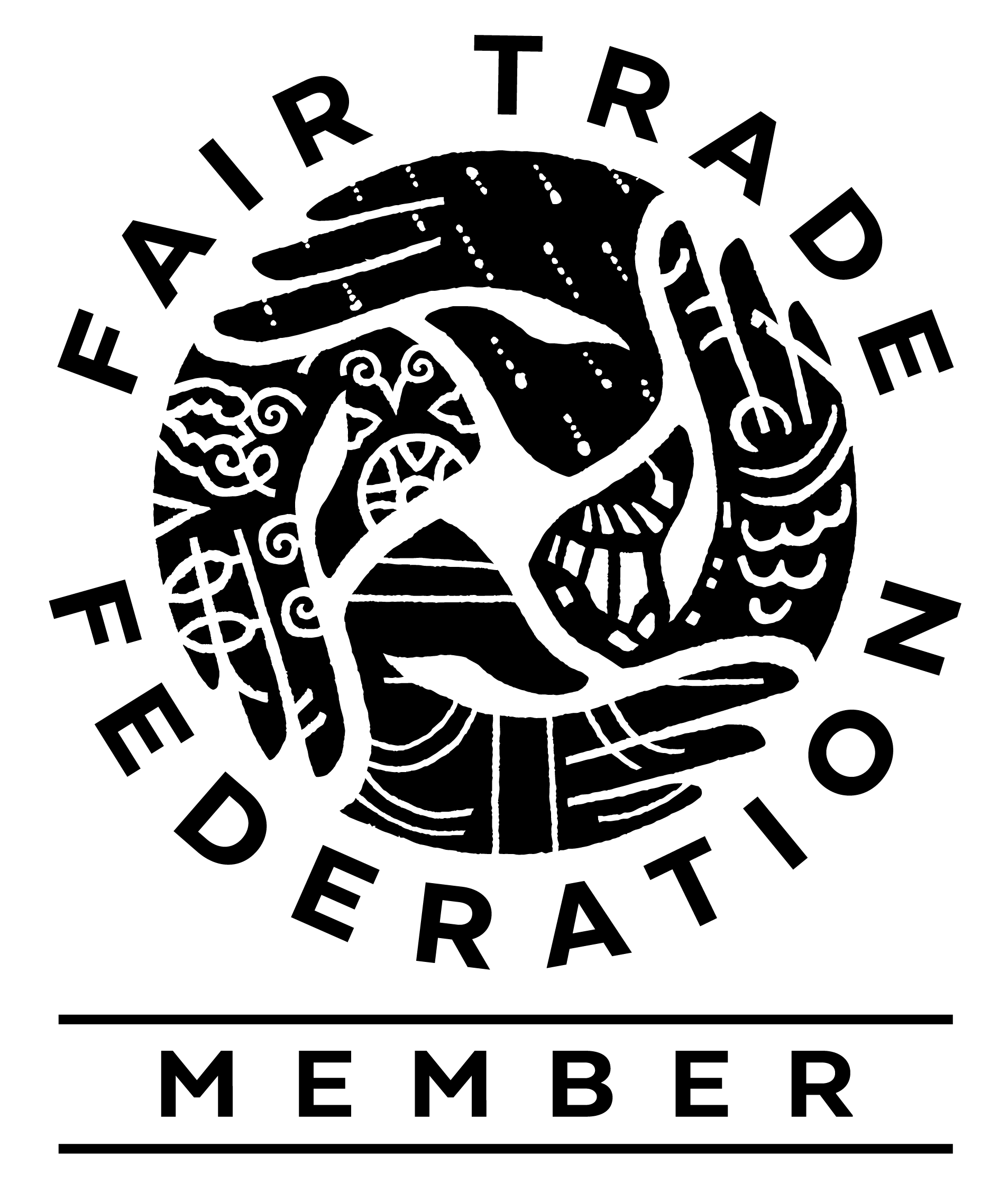

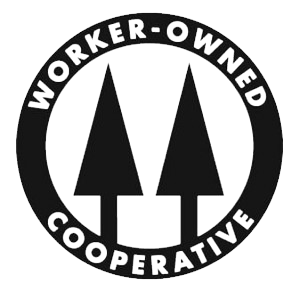
Leave A Comment